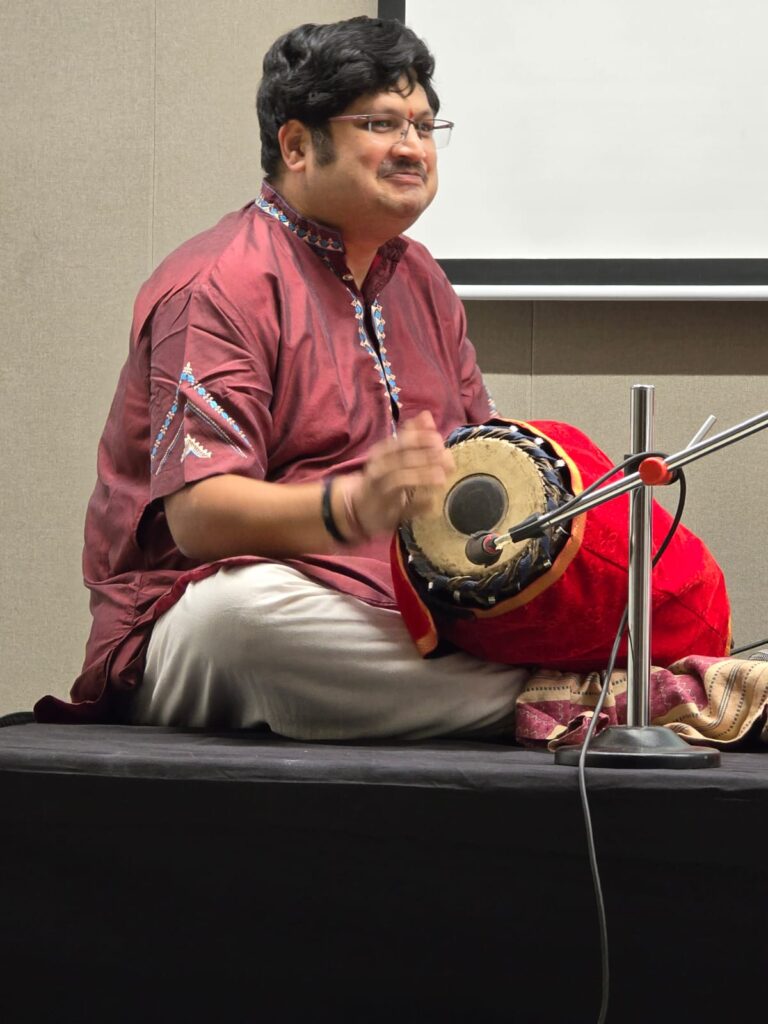Unveiling the Soul of India: A Night of Classical Music
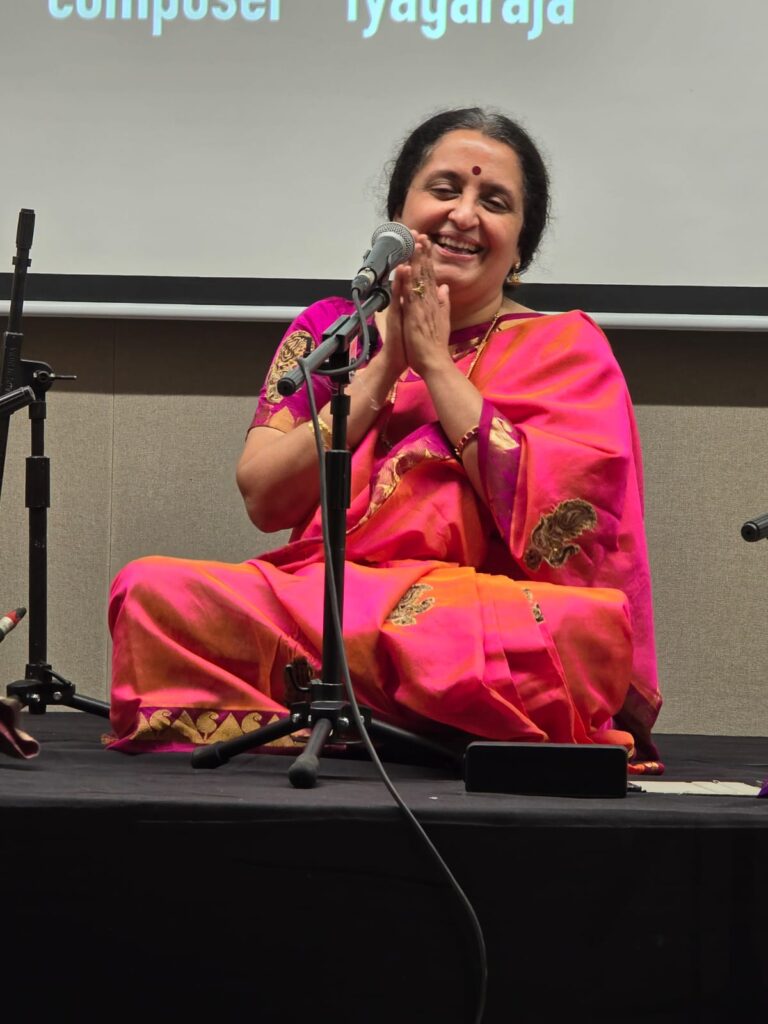
Tonight, we found ourselves immersed in the captivating world of Indian classical music. Musician, writer, and teacher Chitra Srikrishna- a vision in a saree boasting hues of fuchsia and orange, with ornate golden peacocks embroidered throughout -painted a picture of this ancient art form.
A seasoned vocalist with three decades of performances under her belt. Professor Srikrishna, who delved into both the theory and rich history of Carnatic music, offered us a vocal journey supported by the classic ensemble with a violinist and a percussionist that pounded the mridangam, that was utterly entrancing. Her voice navigated the complexities of Carnatic melodies with a grace that was both mesmerizing and bewildering, managing to both hover and dive through the scales in a showcase of classical pieces.
Gone were the preconceptions of complex melodies and foreign languages. She likened it to the movie scores that transport you to another world. Here, the music was not rigid notes on a page, but an improvised conversation between musicians. The vocalist, violinist, and percussionist weaved a tapestry of sound, each anticipating the other’s moves. It was like witnessing string theory in action – three minds vibrating on the same frequency.
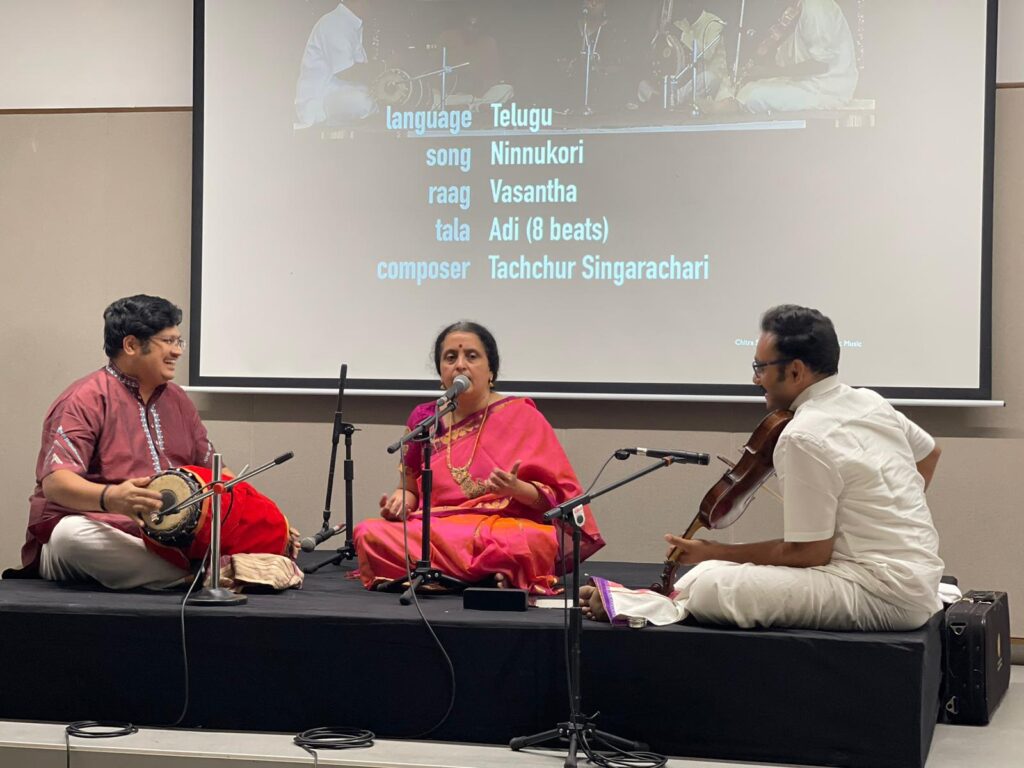
Appreciating the Tradition and Richness:
Classical Indian music is not merely a form of entertainment; it is a profound reflection of centuries-old traditions and cultural heritage. The intricate melodies, rhythmic patterns, and lyrical depth weave a rich tapestry that resonates with the essence of Indian culture.
- Raga, the melodic framework, serves as the foundation, guiding the performer through a maze of emotions and expressions.
- Tala, the rhythmic cycle, provides a rhythmic structure, akin to the heartbeat of the music, grounding it in a mesmerizing flow.
- Sahitya, the lyrical component, infuses the music with poetry, often drawing from ancient texts and philosophical themes, adding layers of meaning and depth.
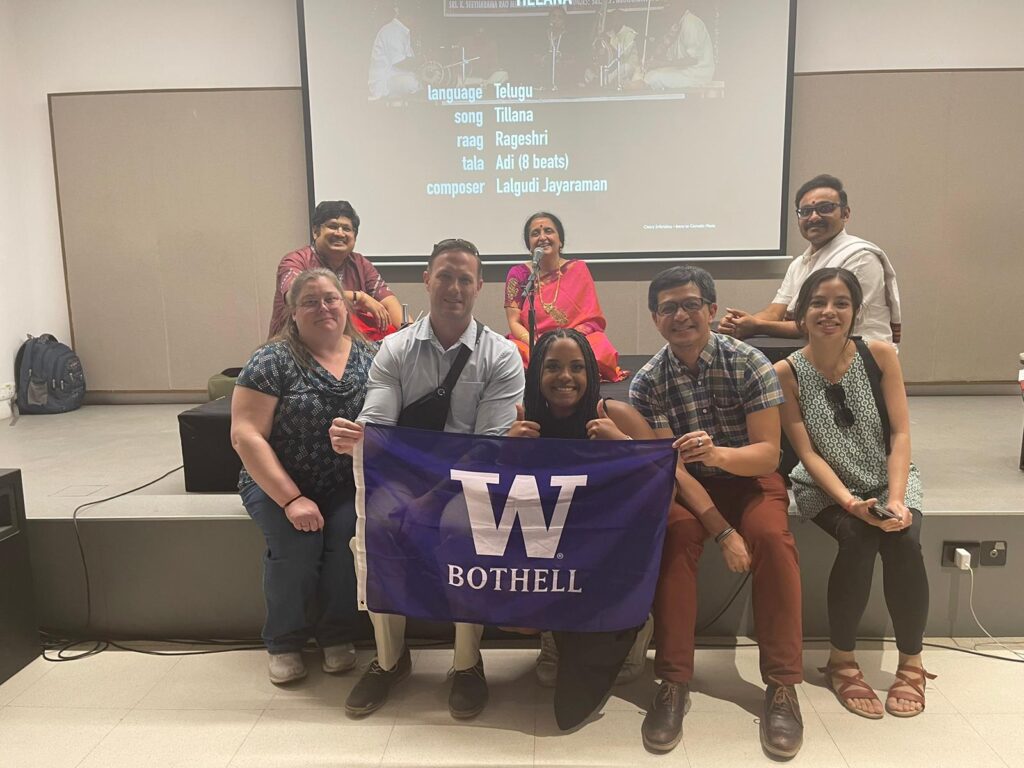
Themes of Devotion to Art:
- Witnessing the devotion of musicians and audiences alike reaffirmed the profound reverence for the art form.
- People’s unwavering commitment to preserving and propagating classical music reflects a deep-seated cultural pride and spiritual connection.
- The intimate relationship between artist and audience fosters a sense of collective participation and spiritual communion, transcending linguistic and cultural barriers.
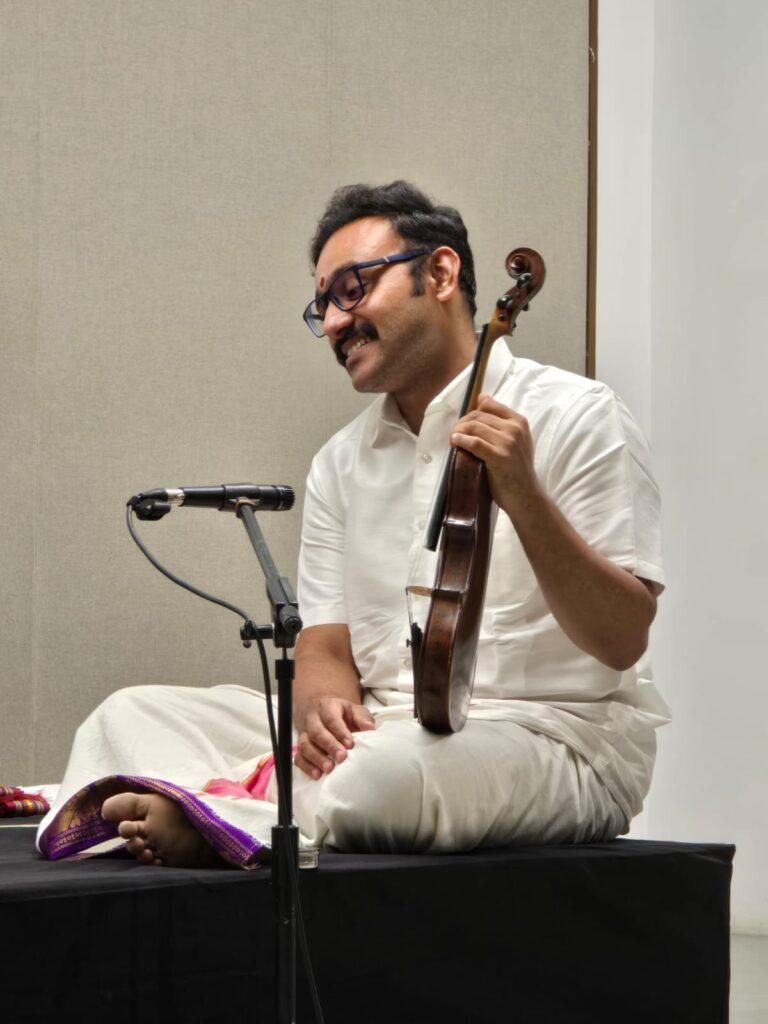
Aural Tradition and Improvisation:
- The aural tradition, passed down from guru to disciple through oral transmission, ensures the continuity of musical knowledge and preserves the authenticity of the art form.
- One of the most intriguing aspects of classical Indian music is its emphasis on improvisation, where performers engage in spontaneous musical dialogues.
- Through years of rigorous training and apprenticeship, musicians develop a keen sense of intuition and mastery over their craft, allowing them to navigate the intricate nuances of raga and tala with virtuosity.
The evening was not just about listening. We, the audience, participated in an anudutram, clapping in unison with the musicians. It was a humbling reminder of the power of music to transcend cultures and create a shared experience. Immersing ourselves in the world of classical Indian music opened our eyes to the boundless depth of human creativity and the profound interconnectedness of culture, spirituality, and art. We have a newfound appreciation for the tradition and richness of classical Indian music, a timeless legacy that bares the soul of this beautiful country that continues to captivate hearts and minds around the world.
